'Jurassic World: Fallen Kingdom' Director J.A. Bayona Talks About Creating That "One Shot" Sequence And More [Interview]
Last week, I had the opportunity to talk to Jurassic World: Fallen Kingdom director J.A. Bayona about the making of his latest film. We talk about why he decided to direct Jurassic World: Fallen Kingdom after turning down the first film, his very collaborative relationship with co-writer/producer Colin Trevorrow, the creation of one of my favorite action sequences from the film, and the decision to make this a story about saving the dinosaurs.
You can read the full interview below. There are no real spoilers in the discussion (the Jurassic World Fallen Kingdom one shot action sequence we talk about is in the trailers), so feel free to dive in.
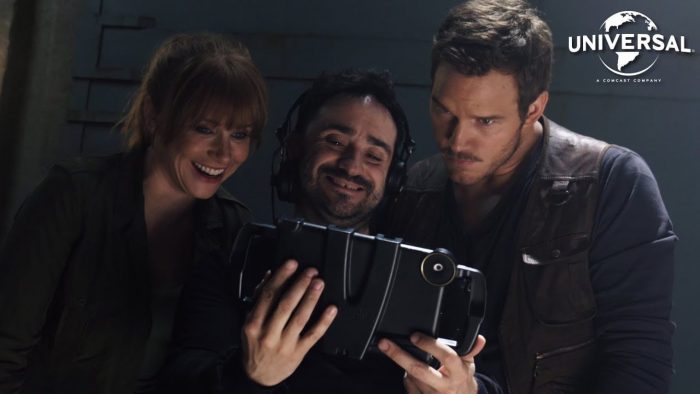 J.A.: Hello, Peter. Peter: Hey, JA, how's it going?
J.A.: Hello, Peter. Peter: Hey, JA, how's it going?
I'm very good. Thank you.
I really like the movie. When I was on set, [producer] Frank Marshall told me that you were originally offered Jurassic World, the original Jurassic World.
Yes.
Why did you decide not to take that but you took this one?
Well at the time I was offered the first Jurassic World, I remember there was no script. And pre-production had to start in six months. Or even shooting, I don't remember now. 'Cause it was a long time ago. But the truth is that I saw myself working on a movie with no, without a script. And I was thinking that I was not that kind of director. So I just say thank you to Frank, but I decided to pass. I really wanted to work with him, but not in that way. So by the time when I was offered to do the sequel for Jurassic World, there was a script and there was some time to work on the script. So this is when I decided that I was going to be more interested in Jurassic World 2.
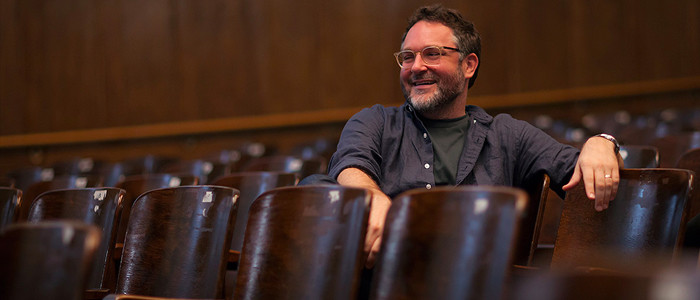 I've talked to [co-writer] Colin [Trevorrow, who directed 2015's Jurassic World] a bit and even interviewing you on set, I get the sense that there's like this very unique, creative, collaborative relationship that you have with Colin that you don't usually see.
I've talked to [co-writer] Colin [Trevorrow, who directed 2015's Jurassic World] a bit and even interviewing you on set, I get the sense that there's like this very unique, creative, collaborative relationship that you have with Colin that you don't usually see.
Yeah, well when you get in a movie like Jurassic World, I think that you put yourself at the service of the story. And there are like other directors who work in the past that can help you and offer you support. And it's not just about Colin, it's also about Steven Spielberg for example, or even Frank Marshall. So I was very aware of what I was doing and I never intended to hijack the franchise and change everything and make it my own. I was very aware that what was my job in the movie. And I just tried to get Colin's ideas and put them on the screen, the more effective way possible.
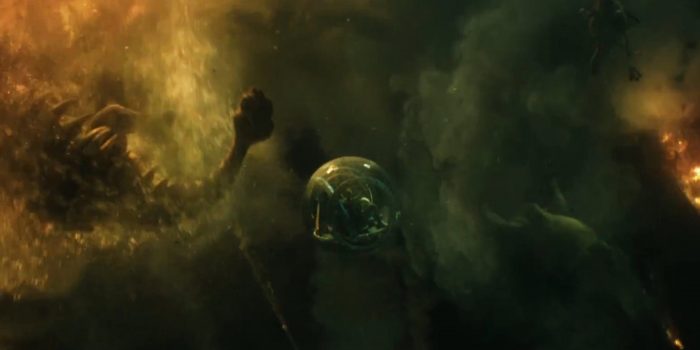 There's one sequence in this movie that I was just amazed cinematically how and I'm wondering how it was created. I'm talking about the gyrosphere sequence that is presented in "one single take." But I'm sure it was not shot that way. Could you talk about how that was put together?
There's one sequence in this movie that I was just amazed cinematically how and I'm wondering how it was created. I'm talking about the gyrosphere sequence that is presented in "one single take." But I'm sure it was not shot that way. Could you talk about how that was put together?
Yeah. That's a good example of the way we worked with Colin. That was all scripted. And I was the one who suggest to make it in a single take. It's not a single take, of course, it's made of several takes. But the idea is to get this sense of claustrophobia. And I decided to keep the camera all the time inside the gyrosphere with the actors, Bryce and Justice.
Now was that created like on a green screen with like a robotic camera? How did you accomplish that?
That was pre-accomplished through a couple of concept development to get to the way we shot it. It's shot in an underwater tank. And it's still pretty dangerous because the camera and the actors are inside the gyrosphere and the gyrosphere really sinks into the water. And there was a moment that the actors are inside of the gyrosphere and they run out of air. And actually felt pretty dangerous from the outside. Yeah. I was a little afraid, I was scared. As a director watching it from the outside. But, I mean, they were great. I mean, they were shooting that for two or three days. Actually that scene actually was shot by second unit, because there was some issues with the schedule. And I have to be shooting on a soundstage that was like back to back from the stage that they were shooting. So that was mostly shot by second unit and I was from time to time moving from one set to the other controlling and, like, taking care of the whole thing.
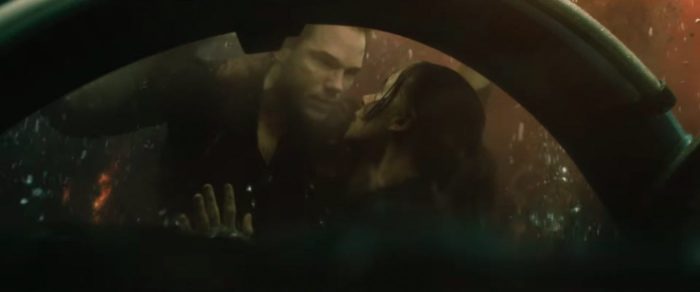 I'm curious, how many shots make up that sequence?
I'm curious, how many shots make up that sequence?
Let me think about it. So it's one – I'm just like going through the shot in my mind right now. But it's like one, two, three, four, like five. Like around five shots. It's like five takes that merge in order to make it look like a single take.
Well, it's pretty seamlessly –
Of course, coming from The Impossible and we did a lot of takes in Impossible that we were merging shots in order to make them look like one single shot. In Impossible, I remember that. When you see Tom Holland and Naomi Watts taken by the, dragged by the waves in the tsunami, the shots over the surface were made in a soundstage outdoors in a water tank. But the shots under the surface were done in a different water tank indoors. So every time the camera goes from over the surface to under the surface, we were merging two takes. So I'm using that knowledge we designed the way of making this take work.
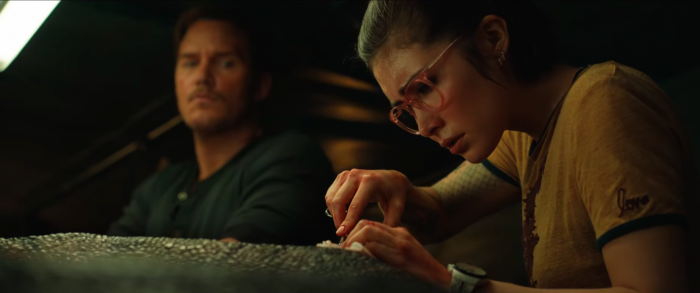 I am a huge fan of this franchise. Jurassic Park is one of my favorite movies, but it wasn't until this movie that I ever got emotional. My eyes got watery during a scene. Damn you for making me care about the dinosaurs.
I am a huge fan of this franchise. Jurassic Park is one of my favorite movies, but it wasn't until this movie that I ever got emotional. My eyes got watery during a scene. Damn you for making me care about the dinosaurs.
I think it's a movie about empathy and about accepting what we don't understand. And it's very interesting how the movie turns from talking about dinosaurs to talking about humans. Without spoiling anything, but there's a moment that the whole thing turns into us. It's not about dinosaurs, it's about us, and our relation towards the animals. That's, to me, quite emotional. I mean, it's quite emotional premise. And there were moments that we were able to take, we did in a very emotional way.
And there is a shot at the end of Isla Nublar that somehow closes a circle that we started 25 years ago right today. Today to 25 years ago. So 25 years ago there was a moment that we saw dinosaurs for the first time. Which is one of the things that I love about the original Jurassic Park is that the first time the characters see a dinosaur, it's the first time we see a CGI dinosaur. And we got the same impression. It's like a way, it's one of those scenes that you feel excited the same as the characters as they discover something that you've never seen before. So it was 25 years ago when we saw a dinosaur. And we were closing a circle. We were saying goodbye to the island. And I thought that that was a very big moment in the franchise and it had to be emotional all through that scene.
And I don't wanna spoil the ending, but that scene on Claire has an echo in the last scene. There's a moment that the whole debate of the movie, which is are we gonna save the dinosaurs or not? Are we gonna interrupt one more time the natural curse of nature or not? So you put the same character, Claire, in the same situation at the end of the movie. And that scene had to be that emotional in order to make that scene emotionally more grounded.
[We then discussed some spoilers, and that discussion will be published next week.]
Well, thank you very much, J.A. I appreciate your time.
Thank you.
***
Jurassic World: Fallen Kingdom arrives in theaters on June 22, 2018.
